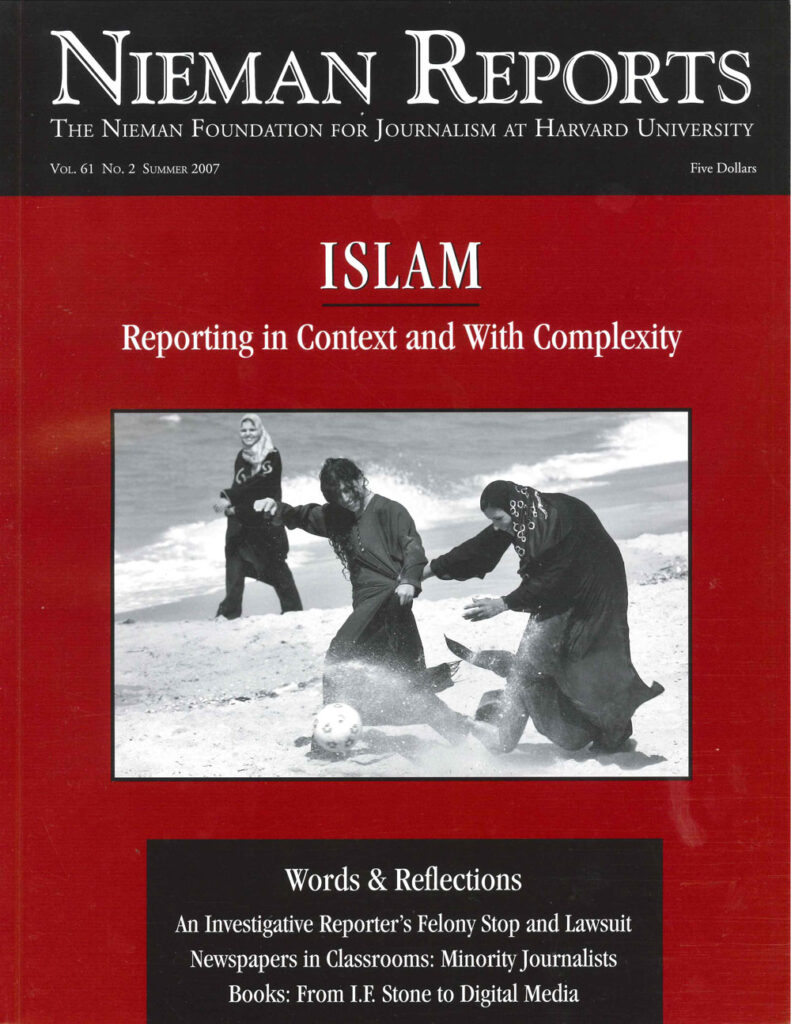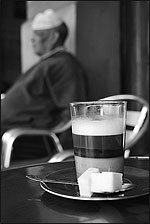The Middle East is a place of a thousand facets and many contradictions: it is the cradle of civilization, the lynchpin of the global energy network, site of humankind's oldest empires, the birthplace of Judaism, Christianity and Islam as well as of the alphabet. It is also, of course, one of the world's greatest geopolitical trouble spots, a region of political instability, religious fanaticism, social tension, and ethnic violence.
I traveled there for the first time 15 years ago and, since then, my photographer's instinct has compelled me to return many times, attracted by the challenge of capturing on film the quiet, often unnoticed details of daily life in a region best known for its turbulent politics. Three aspects of Middle East culture have drawn my eye closer to them: the stark separation between private and public spheres; the lavish traditions of abstract art that finesse the Islamic prohibition on human imagery, and the surprising diversity and opulence of the region's landscapes.
The rift between "indoor" and "outdoor" life marks many aspects of Middle Eastern culture—from its architectural forms to its religious practices and to the starkly divergent roles of men and women and the relationship between them. Men often dominate public life, unabashedly occupying most of the public space in the streets and in cafés. Women usually dominate the domestic space. There are exceptions to this, of course: In Iran, for example, women comprise 60 percent of the student population at universities.
Religion is unavoidable in public life, most notably through the traditional Islamic calls to prayer, broadcast five times a day, starting at dawn, over loudspeakers in most city streets. At the same time, though, Islam has a very intimate and personal side. Devout believers routinely attend mosque to quietly pray and read the Qur'an. Equally surprising is the rich tradition of abstract ornament and calligraphy in the region. The Islamic prohibition on human imagery has not hindered the blossoming of a rich visual culture, though it has spurred concentration and creativity. Indeed, artists have often turned to nature for inspiration, as Middle Eastern art has long drawn upon the opulence of the region's nature and the natural products—spices, fruits and vegetables—that are proudly displayed in the area's plentiful and busy markets.
Katharina Eglau is a freelance photographer with the German agency Joker. Her photographs can be found at www.katharina-eglau.de
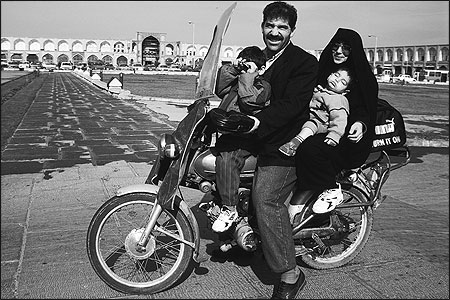
Family on a motorbike. Iran. Photos by Katharina Eglau.
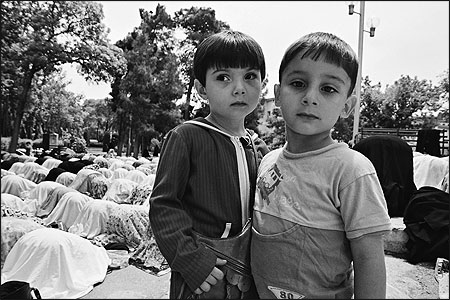
Children stand nearby as women pray. Iran.
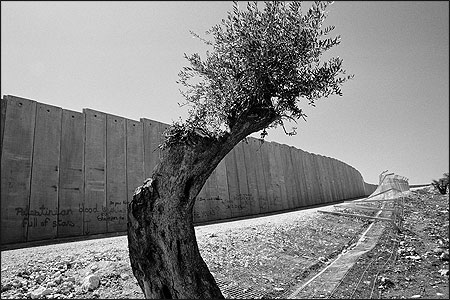
Wall between Jerusalem and Bethlehem in the occupied territories. Palestine.
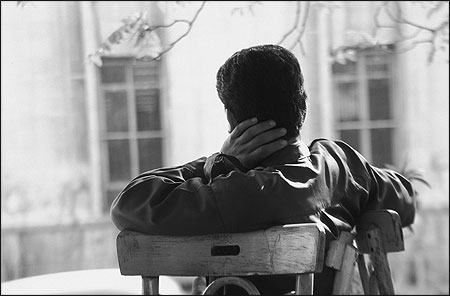
Man in a teahouse. Syria.

Door handle and the hand of Fatima. Morocco.
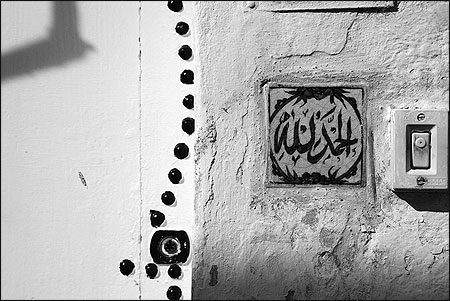
Details of a door with doorbell. Tunisia.
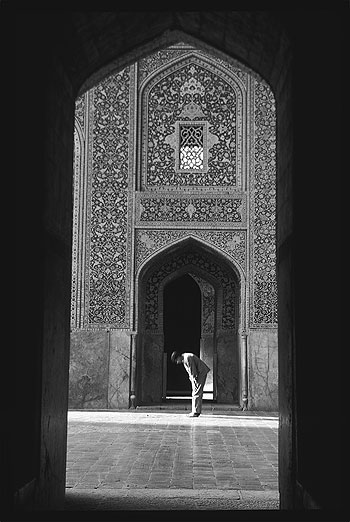
A man bows in prayer. Iran.

Window grille with satellite dishes. Morocco.
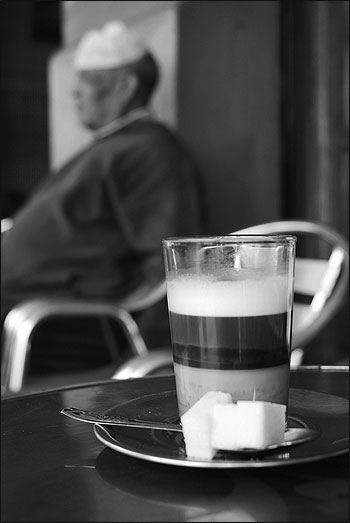
Coffee with milk in a coffeehouse. Morocco.

Mediterranean beach. Gaza Strip.
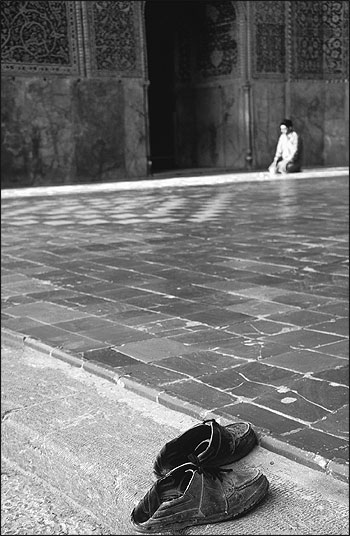
Praying man in a mosque. Iran.

Shoes at the front door of a mosque. Morocco.
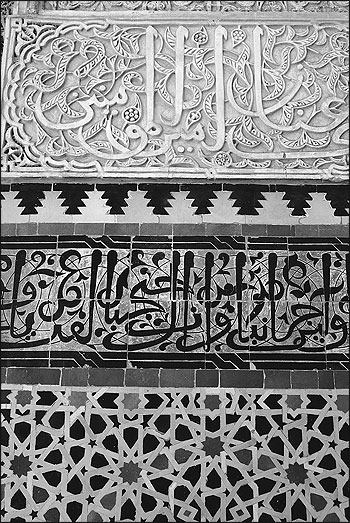
Ornaments. Morocco.
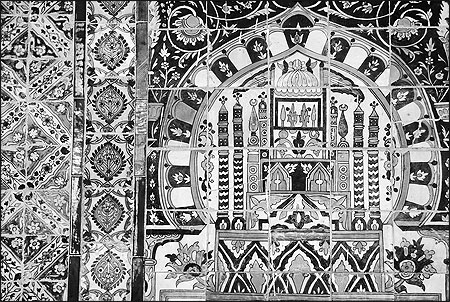
Tiles. Tunisia.
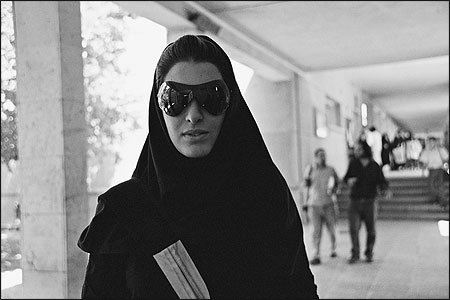
Young woman. Iran.
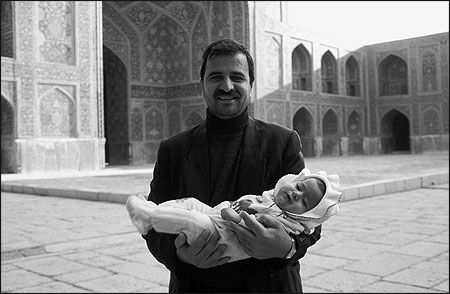
Father with baby. Iran.

Destruction in the wake of war. Lebanon.
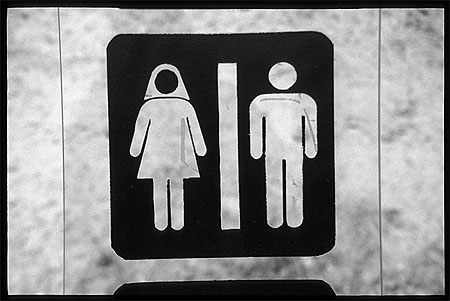
Gender identification plate. Iran.
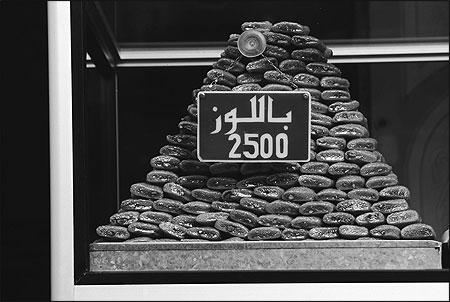
Sweets. Algeria.
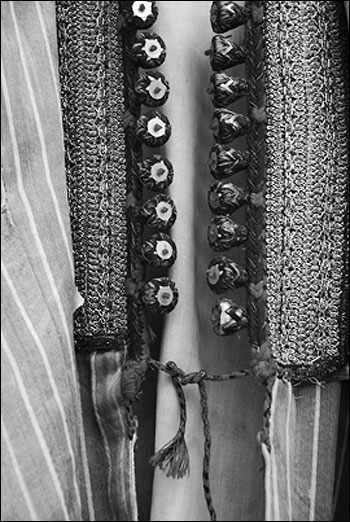
Detail of a male wedding jacket. Tunisia.
I traveled there for the first time 15 years ago and, since then, my photographer's instinct has compelled me to return many times, attracted by the challenge of capturing on film the quiet, often unnoticed details of daily life in a region best known for its turbulent politics. Three aspects of Middle East culture have drawn my eye closer to them: the stark separation between private and public spheres; the lavish traditions of abstract art that finesse the Islamic prohibition on human imagery, and the surprising diversity and opulence of the region's landscapes.
The rift between "indoor" and "outdoor" life marks many aspects of Middle Eastern culture—from its architectural forms to its religious practices and to the starkly divergent roles of men and women and the relationship between them. Men often dominate public life, unabashedly occupying most of the public space in the streets and in cafés. Women usually dominate the domestic space. There are exceptions to this, of course: In Iran, for example, women comprise 60 percent of the student population at universities.
Religion is unavoidable in public life, most notably through the traditional Islamic calls to prayer, broadcast five times a day, starting at dawn, over loudspeakers in most city streets. At the same time, though, Islam has a very intimate and personal side. Devout believers routinely attend mosque to quietly pray and read the Qur'an. Equally surprising is the rich tradition of abstract ornament and calligraphy in the region. The Islamic prohibition on human imagery has not hindered the blossoming of a rich visual culture, though it has spurred concentration and creativity. Indeed, artists have often turned to nature for inspiration, as Middle Eastern art has long drawn upon the opulence of the region's nature and the natural products—spices, fruits and vegetables—that are proudly displayed in the area's plentiful and busy markets.
Katharina Eglau is a freelance photographer with the German agency Joker. Her photographs can be found at www.katharina-eglau.de

Family on a motorbike. Iran. Photos by Katharina Eglau.

Children stand nearby as women pray. Iran.

Wall between Jerusalem and Bethlehem in the occupied territories. Palestine.

Man in a teahouse. Syria.

Door handle and the hand of Fatima. Morocco.

Details of a door with doorbell. Tunisia.

A man bows in prayer. Iran.

Window grille with satellite dishes. Morocco.

Coffee with milk in a coffeehouse. Morocco.

Mediterranean beach. Gaza Strip.

Praying man in a mosque. Iran.

Shoes at the front door of a mosque. Morocco.

Ornaments. Morocco.

Tiles. Tunisia.

Young woman. Iran.

Father with baby. Iran.

Destruction in the wake of war. Lebanon.

Gender identification plate. Iran.

Sweets. Algeria.

Detail of a male wedding jacket. Tunisia.
